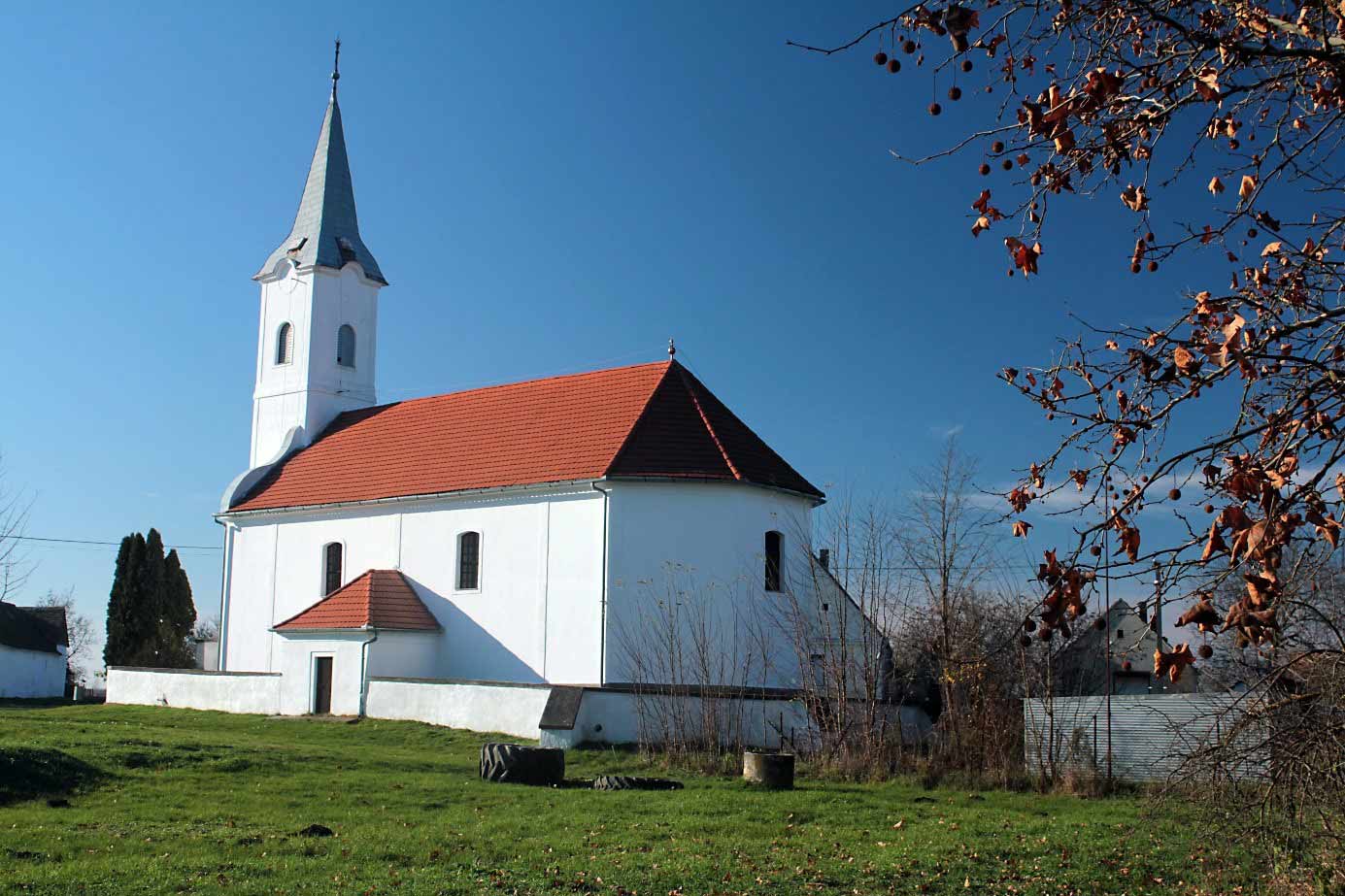The name of the village refers to the fact that it already had a church in the very early times and ‘haraszt’ (filcales) refers to the wide range of oak forests in the surroundings. It was already inhabited in the Bronze Age, but according to a written record dating from 1294 it was mentioned as an important place where military road crossed.
The old village was populated by Hungarians and was probably inhabited permanently even under the Turkish occupation. According to Frederick Pesty the villagers moved to a place better protected by forests and swamps in 1700.
In 1840 it had 600 inhabitants and from 1837 the settlement already had a school. Its population was Hungarian; some German-speaking families lived here only from the very end of the 19th century. 432 Hungarian-speaking people were living here in 1930. 429 Hungarian, 26 German and 10 Slavic people lived in the village and in Livodapuszta in 1970.
In August 2005, an exploration was carried out around the old mill stream and 37.5 ° C thermal water was found, but they hope that further excavations would result in even hotter thermal waters.
Attractions
Calvinist church
Its tower with the entrance faces towards southwest. The side entrance was built near the left side of the nave. The former church which was built between 1785 and 1786 and it was devastated by a fire. The new church was erected in 1853-55. A new tower was built in 1939. It was renovated in 1967. The numbers of seats are 200+50 in two balconies. The pulpit is masonry; the wooden round table is a monopod. The bells are 286 kg (85 cm) and 76 kg (52.5 cm). The scripts on them are the following: ‘It was casted by the Calvinist church of Egyházasharaszti in 1927. [1]
[1] http://www.templomaink.hu/index.php?muv=telepules&telep=Egyh%E1zasharaszti




